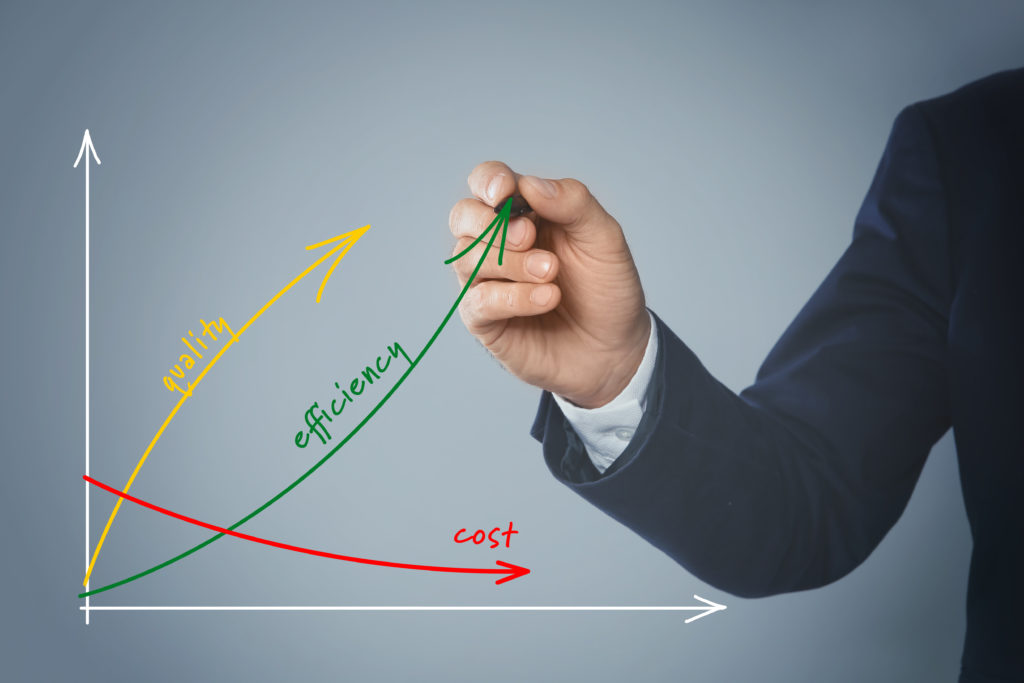Introduction
The effective use of resources is an effective way in which organisations can reduce their environmental impact and reduce costs. It always strikes me as strange that companies will cut costs in many other ways but will not consider mechanisms by which they can reduce resource usage. For example, after undertaking a resource efficiency survey of a small electrical retailer, I mentioned that with a few small changes the company could save many thousands of pounds. My host stated that the profit on them selling a washing machine was about £50. They would therefore have to sell many more washing machines and other items to get any where near the amount of money that could be saved by using resources more efficiently, which would be much easier than selling more washing machines!
Building a business case
Generally, resource efficiency surrounds doing more with less or a similar quantity of materials. It is something that I have been involved in throughout my career, particularly providing to small and medium sized enterprises. What it will cover varies by organisation, but common issues include raw materials, water consumption, energy usage, and waste minimisation.
To build a business case for resource efficiency we obviously need to point out the benefits to those in power. Being resource efficient has many benefits – reducing costs is a key one, if you use less energy, produce less waste, or use less raw materials then you are going to save cash – simple as that! Resource efficiency will also make it easier for an organisation to comply with some environmental law, for example the less waste there is on a site then the less chance there is of it escaping and causing pollution. It will also help reduce environmental impact in numerous ways such as assisting in reducing pollution across the supply chain. There are many, many others too, seems like a no brainer, right?
A strategy for resource efficiency
I have taught and implemented resource efficiency schemes on numerous occasions over the years. I think a good approach to resource efficiency, which could be quite easily implemented with a formal environmental management system (EMS), could involve the following:
Step 1 – Determine the potential for saving money
At this stage a rough estimation should be determined of how much money an organisation can save from being more resource efficient.
Step 2 – Obtain management commitment
Without gaining the approval of those in power, it is unlikely that a resource efficiency scheme will be successful, so we need to present our business case to those people.
Step 3 – Mapping process flow
To gain a good understanding of what occurs in a business it is important to map out processes and develop a process flow diagram of all the activities with and organisation and how they fit together. This should be undertaken for all relevant activities from where raw materials enter to where a product leaves. Once this has been completed we can then determine input and outputs for each activity covering input issues such as water, energy and raw materials and outputs such as wastes and pollutants.
Step 4 – Determining the cost of inputs and outputs
For each input and output we then need to estimate as accurately as feasible how much money is being spent on them, such information could come from electricity, waste, gas, water or raw material invoices, and stock information. Don’t forget hidden costs such as staff time, PPE and treatment costs.
Step 5 – Generating improvement options
Once we know what an issue is costing the business we then need to generate some options for reducing such costs. As you have guessed we should probably start on the issues that are costing the organisation the most money. Advice on reduction techniques can be gained from many organisations such as WRAP.
Step 6 – Feasibility assessment
From step 6 then a whole host of potential options to be more resource efficiency will have likely to have been developed. We now need to assess each option and rank their feasibility from a technical and economic point of view.
Step 7 – Implementing the scheme and maintaining momentum
The final task, and probably the most difficult, is to implement the improvements to make the organisation more resource efficient. Much thought is needed of ways to keep people interested and making sure that the project does not go stale.
Final Note
I think resource efficiency is massively underrated, in these tough times organisation’s are looking to save money and one fairly easy way to complete this is by using resources more efficiently. Such a scheme also has significant other benefits such as reducing pollution, increasing corporate image, and improving legal compliance.
—
John Binns BSc (Hons), MSc, MSc, MISEP (formerly IEMA)

With over 19 years’ experience working in environment management, John Binns BSc (Hons) MSc MISEP (formerly IEMA) is an experienced environmental tutor and consultant with knowledge of health and safety management.
